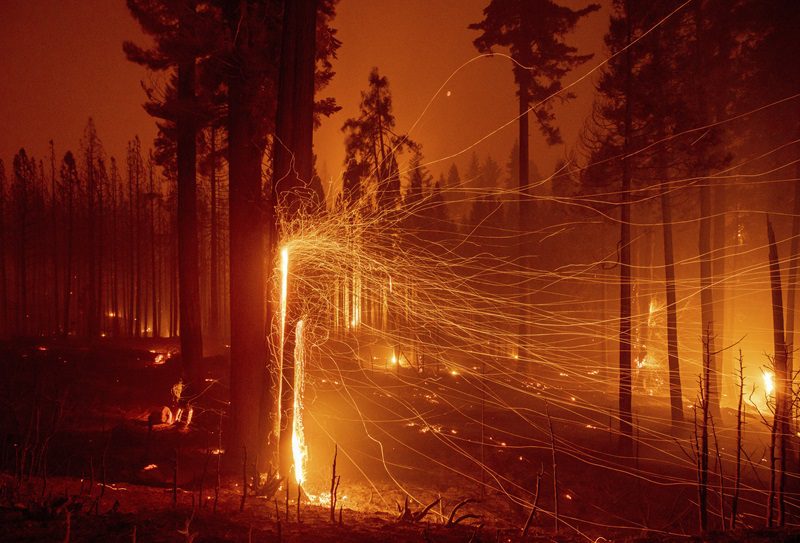How to help clients mitigate wildfire damage

Clients looking to protect structures from wildfire damage should pay particular attention to embers, the farthest-reaching mode of wildfire attack, a speaker said earlier this month at the RIMS Canada Conference in Vancouver.
There are three modes by which wildfires attack structures: direct flame, radiant heat, and ember attack. Structures are particularly susceptible to ember ignition due to openings in buildings, says Andrew Foote, senior consultant, wildland fire and natural hazards analysis lead with Sigma7 Paragon Risk Engineering in Camano Island, Washington.
“Those little pieces of burning material carry a lot of energy, and in a wildfire situation, they can be carried by winds very significant distances,” Foote says during the session, Wildland Fire: Recognizing, Quantifying and Mitigating Exposures.
“Structures are particularly susceptible to ember ignitions because of the openings which are designed as part of those buildings, not just doors and windows,” he says. “Vents and gable roofs, anything that leads into a combustible space inside your building, is a critical point that must be identified and mitigated.”
As an example, he points to an incident report from the 2021 Caldor Fire near South Lake Tahoe, California.
“The responding officers noted now they had their eyes fixed on the ridge,” Foote says. “They were watching the main flame front and getting calls on the radio for two miles behind them, flare-ups, because there were burning embers being carried by that wind off the ridge over their heads, landing in susceptible materials well behind them.”
So, what can clients do to help mitigate wildfire damage?
Manual closure of openings in buildings is an option, as are ember-proof vent covers. These covers trap burning material as it moves, choking it off and smothering that piece of material, Foote explains. A “partial solution” could even be a one-sixteenth inch of stainless steel screen.
And while videos or stories of direct flame damage may make the news, smoke intrusion can be just as serious, Foote says.
‘They weren’t prepared for that’
In one case, he was working with a hospitality in western Washington.
“They were 10 miles from any active flame front, and they still had a $5 million loss because they had to throw away every mattress, every pillow, all the carpet out of that place,” he says. “And they weren’t prepared for that; they didn’t see that coming.”
For hospitality clients, it’s also important to consider critical clean air in patient areas in hospitals and how that will be affected by smoke moving into the area.
In general, to protect property, Foote recommends starting with the most critical areas — buildings that are the most vulnerable and need to be protected at all costs. The first step is to remove vegetation five to 10 feet out from the building.
Moving outward from those building perimeters, there may be areas where some vegetation may be allowed, “but we don’t want those continuous canopies,” Foote says. “We don’t want a continuation of fuel…Wildfire, or fire, does not distinguish between vegetation and structures.”
An independent water supply on site is another consideration. “Oftentimes during these large regional droughts, there will be water restrictions put in place at facilities, and so watering of vegetation [and] landscaping might be limited.”
Practice makes perfect. Foote recommends clients practice a response plan before committing to a timeframe, coordinate with local authorities, and even conduct a pre-loss claims run-through with an insurer to understand how the process works.
“Having a pre-agreement with a temporary utility vendor to bring generators onto your site can be…[used for] wildfire, so bridging that gap and bringing those aspects together is critical when we consider our post-fire plans,” he says.
“Failing to prepare does equal preparing to fail,” he says. “Damages are preventable when proper consideration is given ahead of time.
“And I think that’s something that we really need to hold on to as our North Star here. This damage is preventable, but the planning is essential.”
Feature image: In this long exposure photo, embers fly from burning trees as the Caldor Fire grows on Mormom Emigrant Trail east of Sly Park, Calif., on Tuesday, Aug. 17, 2021. (AP Photo/Ethan Swope)



